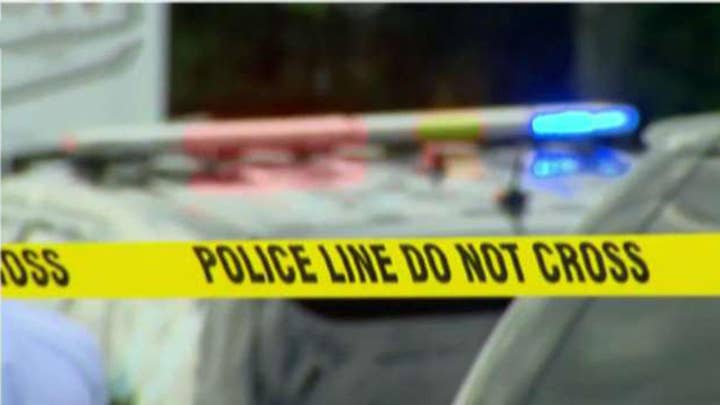Dan Bongino responds to video of mob attacking Baltimore officer: I blame the political leaders
A video posted on social media shows a Baltimore police sergeant repeatedly kicked by bystanders while trying to make an arrest; reaction from Fox News contributor Dan Bongino, former NYPD officer.
Get all the latest news on coronavirus and more delivered daily to your inbox. Sign up here.
Law enforcement in Baltimore has a new tool to fight crime: aerial surveillance.
Starting Friday, the roughly 600,000 people living in Baltimore will be constantly recorded whenever they step out under the open sky.
This deeply segregated seaport city in Maryland has now suffered more than 300 homicides annually for five years straight, setting a per-capita U.S. record with 348 killings in 2019. Eighty-nine people have been killed so far in 2020, just three fewer than last year’s pace. Lesser crimes are down sharply as people shelter inside during the coronavirus pandemic. However, there were 177 non-fatal shootings, compared to 212 last year.
CLICK HERE FOR FULL CORONAVIRUS COVERAGE
For the next six months, up to three airplanes outfitted with wide-angle cameras will sweep over Baltimore in daytime flights designed to capture movements across about 90 percent of the city. Software will stitch together photos taken once each second, creating a continuous visual record to support the street-level cameras, license plate readers and gunfire sound detectors police already use to try to solve crimes.
Analysts alerted to a crime will be able to zoom in from the city-wide image and move backward and forward in time to identify the movements of potential suspects and witnesses, telling officers within hours just where to look for people who traveled to and from the scene.
Police Commissioner Michael Harrison has promised that this system will only be used to investigate homicides, non-fatal shootings, armed robberies and carjackings. He said he doesn’t know whether the pilot program will be effective.
“I have no expectation of what it would do or what it will not do because it has not been done in the United States before,” he told The Associated Press. “What I’ve been shown shows me that it’s a potential tool that could be used by detectives in the crime fight.”
As for concerns about violating the people’s rights across an entire city, Harrison said the Supreme Court has ruled that “there is no expectation of privacy in a public place.”
Ohio-based Persistent Surveillance Systems (PSS) will capture the images and provide the analysis to police, funded with roughly $3.7 million from Texas billionaires Laura and John Arnold.
The contractor already secretly tested this surveillance in Baltimore in 2016, as crime soared after the death in police custody of a young black man, Freddie Gray. But that effort was cut short once exposed, and violent crime has flourished since then, along with mistrust of police, and some of Baltimore’s leaders are now publicly committed to testing mass aerial surveillance.
PSS President Ross McNutt initially developed the technology to help the Air Force identify people leaving improvised explosive devices that were killing troops in Iraq. McNutt says that resolution of the images aren’t sharp enough to identify faces, ethnicity, gender and clothing, nor vehicles’ color, make, model and license plate.
Police say they won’t be using this to monitor people outside the context of a serious crime that has already happened. The city’s agreement specifies that PSS analysts will study movements “only when an egregious violent crime is already known to have occurred.”
Third-party researchers from three universities and the RAND Corp. will evaluate whether the program leads to arrests and case closures, earns public support and ultimately has a deterrent effect.
CORONAVIRUS: WHAT YOU NEED TO KNOW
Andrew Ferguson, a law professor who writes on policing using big data, said police chiefs see technology as a solution when they’re backed to the wall by violence in their communities.
“It doesn’t matter what that something is. They just have to respond because ‘Chief, what are you doing about crime?’” Ferguson said. “The real answers are ‘Well, I need better schools. I need more jobs. I need some hope and opportunity in these cities, better housing.’ But that’s not available. He doesn’t have that.”
The Associated Press contributed to this report.



